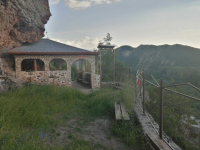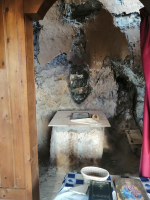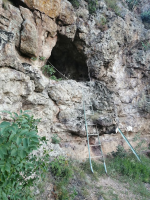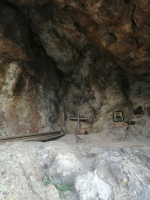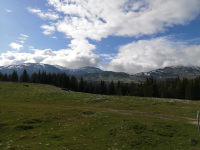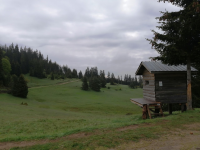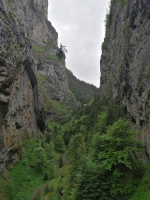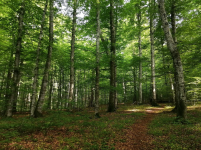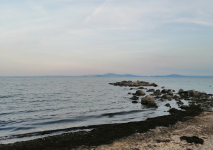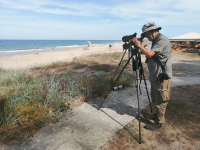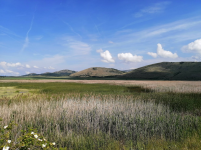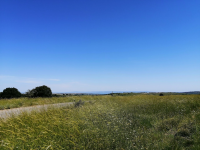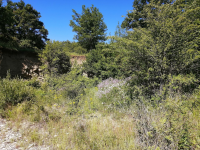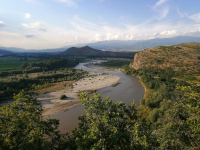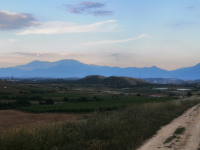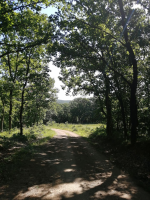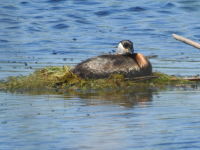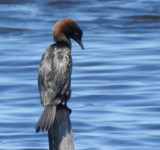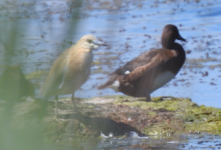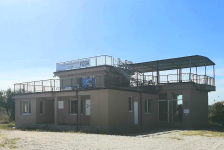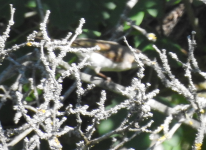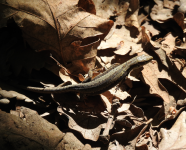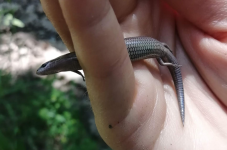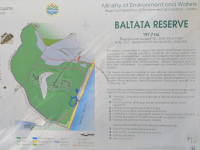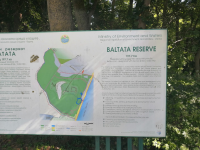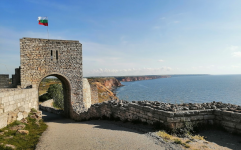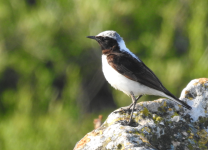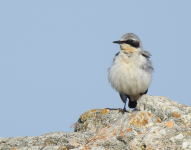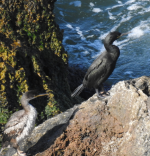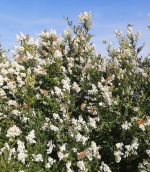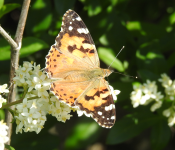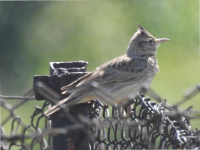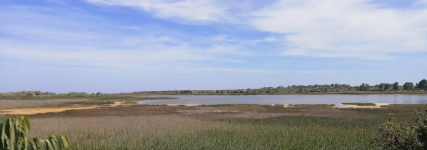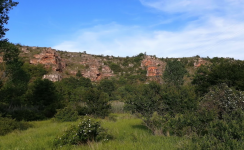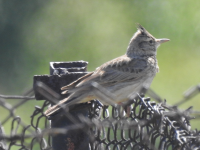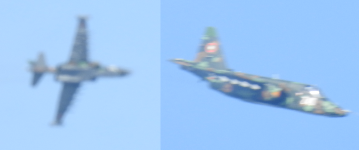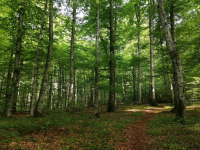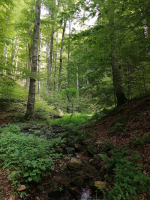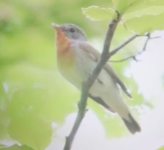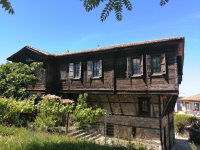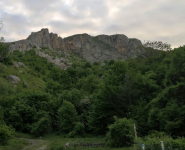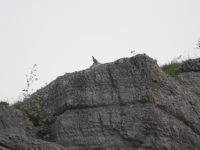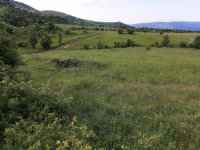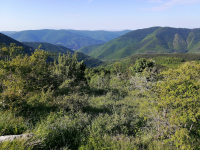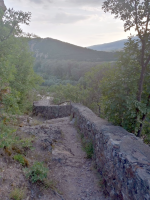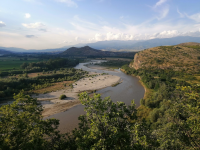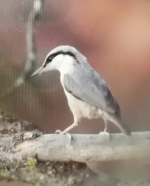A Historical & Cultural Interlude (or once a History teacher ...)
With such a deep and varied history stretching back to the ancient
Thracians, I expected every town and village in
Bulgaria to be littered with evidence of its ancient and medieval past. Although there were interesting classical archaeological remains in
Sofia,
Cape Kaliakra,
Sandanski and
Rupite (plus an Ottoman hammam in
Karvana), I was surprised that so little from medieval times remained above the ground. Most strikingly, unlike the
UK (or most of
Western Europe), hardly any settlements seemed to have religious buildings (be it church or mosque) dating from the
Late Medieval Period or earlier. I think I saw no more than a handful of really old churches or mosques all told with the three standout examples all being in
Sofia; the
Rotunda of Sveti Georgi (originally a 4th Century bath house), the 6th century
Hagia Sophia and the 16th century
Banya Bashi Mosque. In rural areas, I spotted only one or two ancient churches and all of the (more prominent) mosques appeared to be of fairly recent construction. Perhaps there’s a clue in the two churches noted earlier, both served as mosques during
Ottoman rule. So were churches demolished/suppressed under
Ottoman rule? But why so few old mosques? And what happened during the communist era? What impact, if any, did earthquakes have?
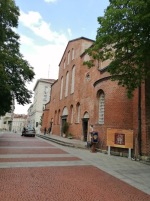
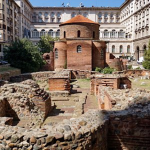
Equally striking was the absence of old vernacular buildings in general. Most villages appeared to consist of buildings dating from the latter part of the 20th century with only the occasional older-looking building (more often, perhaps, in the mountains). One exception was the charming fishing port of
Sozopol on the
Black Sea which alone of the places I visited had a substantial core of charming old buildings. The construction was interesting too – 3-5 layers of roughhewn stone divided by horizontal planks and topped by a wooden jettied storey. Did the planking serve some purpose other than decorative, perhaps to stabilise buildings during earth tremors? Why was the top storey made of wood? Was it cooler living accommodation in the summer?
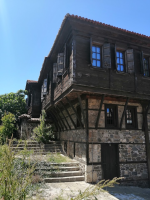
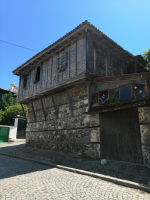
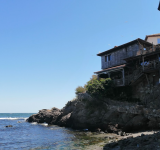
Most of the towns we passed through or stayed in weren’t particularly attractive or historic although, despite the relative lack of older buildings, I particularly liked
Sandanski. This town had a distinctly
Mediterranean atmosphere and boasted a pleasant broad tree-lined boulevard leading up to a handsome park. There were also substantial
Roman ruins there and an excellent small archaeological museum which housed several good mosaics including one decorated with what appeared to be
Ring-necked Parakeets and
Purple Swamphens! In addition to the hammam in
Karvana, there was also a small ethnological museum that I managed to take time out to visit. It was fascinating to see the distinctive clothes worn in the 19th century which signaled the wearers' ethnicity and religion.
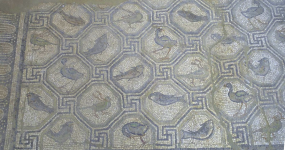
Mention must also be made of my brief stop in
Veliko Tarnovo. Although I only had time to walk around the fortress of
Tsarevets (which once housed the royal and patriarchal palaces), it occupied an impressive location on a cliff-lined horseshoe bend above the Yantra river. The town itself was the capital of the
Second Bulgarian Empire and begged to be explored but
Victor was well-rested, and we still had a long way to go. A good reason to go back to Bulgaria and explore other aspects of the country beyond the wildlife. Next time perhaps …
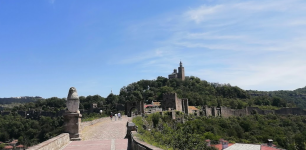
I cannot end this brief dalliance into history and culture without mention of
Baba Vanga,
Heraclea Sintica and
St. Pantaleon. “
Baba who?” you may well ask but this blind clairvoyant and soothsayer, a latter-day
Nostradamus if you will, had a huge following and was widely known in
Eastern Europe. Her reputation was such that it’s rumoured that the
Tzar Boris III of Bulgaria (1894-1943) consulted her. One might have thought that her star would have waned under the atheist post-war
Communist regime, but she was reportedly consulted by members of the
Bulgarian Communist Politburo, leading intellectuals and even, some claim,
Leonid Brezhnev! She’s commemorated by a new church and museum set in pleasant grounds which, to judge from the lines of stalls selling tourist tat and local produce that line the approach road, remains a very popular tourist/pilgrimage destination. Personally, I found the nearby muddy medicinal hot springs more interesting.
I found this continuing reverence and regard bizarre. I also rather resented that
Baba Vanga’s museum got more attention and care than the nearby rather neglected ruins of
Heraclea Sintica, a 4th century BC town founded by
Philip II of Macedon (unfortunately time and weather defeated my intention to visit this site). The odd thing is that if you must have a character and site worthy of veneration there’s a much better candidate just across the river. On a bluff just across the
River Struma, there’s a small rock chapel (no more than a niche and a small cave) dedicated to
St Pantaleon. Who he?
Pantaleon was a doctor from
Nicomedia who became a genuine
Byzantine saint and martyr. He’s now relatively obscure (although he remains the patron saint of physicians and midwives) but he has been revered across
Europe for over a thousand years. He’s a patron saint of the
Portuguese city of
Porto, explorer
Bartolomew Diaz’s named one of his ships after him, the (in)famous
Russian battleship, the
Potemkin, was renamed in his honour and his name even crops up in
Philip Pullman's
His Dark Materials novels. The place continues to be a site of quiet and discrete and modest veneration (with only a modest portico pritecting the holy niche), a contrast to the in-your-face celebration of Baba Vanga across the river. He also seems to be more effective in answering prayers … Back to the birds!
